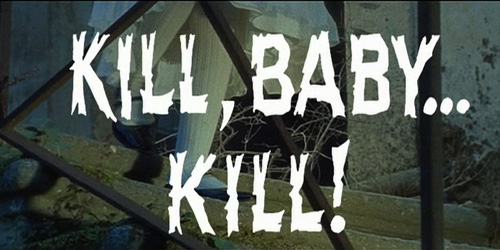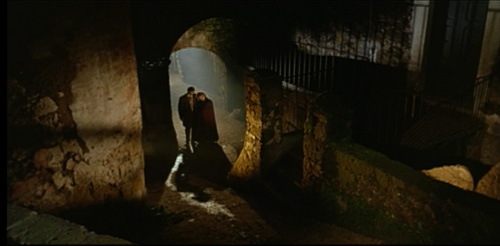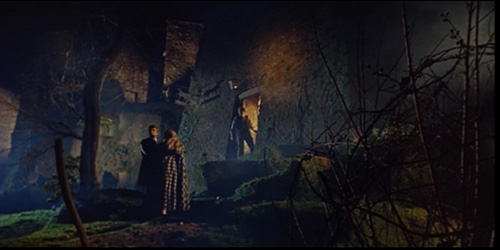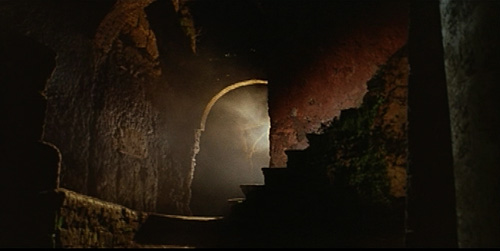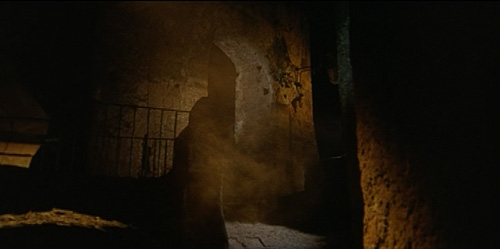Kill, Baby… Kill!
Written by Joe D on September 3rd, 2007I bought a few videos at Jerry’s since he’s closing up shop. One of them was Mario Bava’s Operazione Paura (USA Title: Kill, Baby… Kill!). What an amazingly cool movie. This is the first time I’ve seen it and it ranks up there with Black Sunday.

Excellent Locations
Bava was a supreme visual artist as the screenshots will attest. He studied to be a fine artist but followed in his father’s footsteps and became a Cinema Artist instead. His father Eugenio was a sculptor and the father of Italian Cinematographic Special Effects, in fact according to the excellent commentary by Bava expert Tim Lucas, Eugenio invented the so-called Schufftan Process on Cabiria years before Schufftan used it on Metropolis!

Bava’s father gave him the ripple glass used in this shot
The apple didn’t fall far from the tree as Mario uses many incredible in camera effects in his films. Effects that he designed and executed himself! The only person around today that does this kind of thing is Michel Gondry. But back to our movie. There are so many painterly compositions in this film. I’ve selected a few paintings I was reminded of.


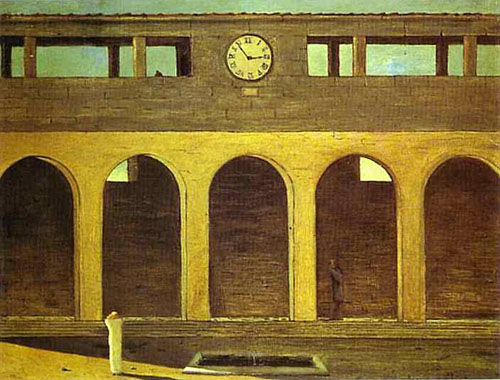

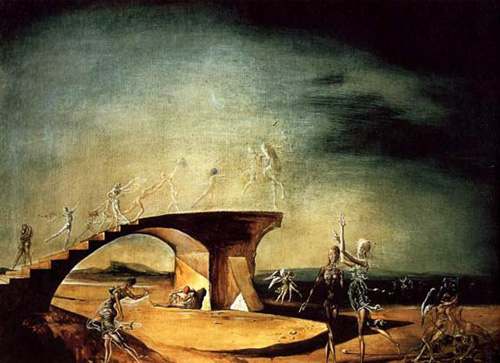
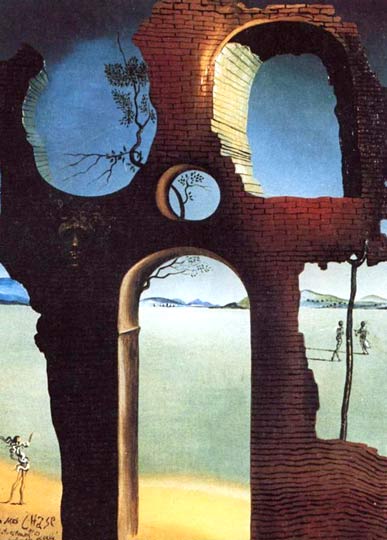
Mario studied Art History and he grew up in Roma, surrounded by great art and it’s evident here. Some of the artists brought to mind by Kill, Baby… Kill are Peter Breughel the elder, Piranesi, di Cherico, and Salvador Dali.
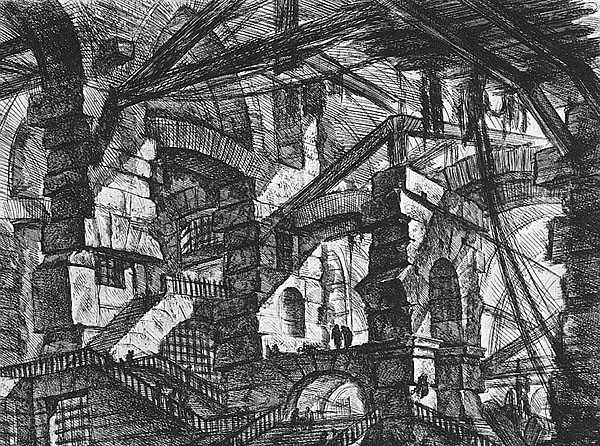
An etching by Piranesi
A CinePainting By Bava
Existential town squares, surreal crumbling landscapes, strange scenes of medieval village life are all brought to mind.

Here’s one in the Studio
This film was made for next to nothing but looks so incredible, Bava was a true “painter with light” as a cameraman and director.

All The Colors Of The Dark
His use of colored gels in composing a scene is unequaled, as well as his beautiful camera moves, always in the service of telling the story, never drawing attention to themselves. He would use ripple glass in front of the camera, or a distorting mirror, or shoot through a painting on glass, or as I mentioned earlier use colored lights to create an effect. All done In camera! Nowadays it’s all put together on a computer after the shoot is over and at much greater expense.

Child’s Play
The music is by Carlo Rustichelli, an old school Italian composer, he scored many peplums (Muscle man films, Machiste, Hercules, Samson). But according to Lucas he only wrote one piece expressly for this film. A beautiful piece that works perfectly. The instruments are Celeste, Vibraphone, Harp, and Fender Bass, and usually there’s a child’s laughter playing over it. Great! There is also some pipe organ pedal music used. My friend Danieli Luppi ( a great Italian composer) told me that many of these film scores were done at a studio in Rome called Forum. It’s in the basement of a church and when the church was empty they would use it’s pipe organ! It gives an even more chilling aspect to horror movie music to know it was recorded in an old church. The rest of the score is cobbled together from other Bava films and other uncredited composers. Tim Lucas says the producers ran out of money halfway through the shoot. People had to work for free and Bava was never paid! So when it came time to score the movie there was no dough! Bava had to call in some favors and get whatever music his friends could give him. I’d like to talk about the Italian method of film scoring vs. the american way. The Italian composer would read the script and write themes, sometimes he’d record the music before the film was shot! The american on the other hand has a stopwatch and some idiot director yelling at him” OK on this frame I want a sting! When her eyes move I want a change in the music!” It’s so micro managed you lose the musical flow! When you edit a movie you are creating a visual music out of the shots, there’s a rhythm, a pace, a heartbeat, it’s musical. So when you put a piece of music against a scene magic happens, things coincide, sync up, play as one. I personally like the Italian way better.
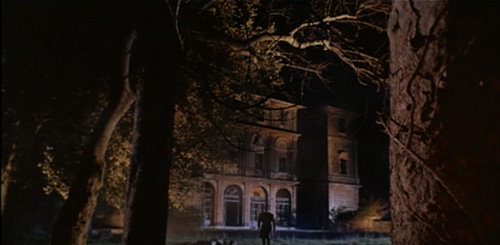
Visions Of Hell
The locations chosen for this film are so great, they convey the atmosphere perfectly, also this is a period piece set in 1907, today that means $100 million dollars! The budget for this film was about $50,000! Fog machines and fake cobwebs add a lot of creepiness, but they have to be lit right or else they look bad.

The Kill Baby at the Window
A Daliesque composition
There is an amazing sequence in the film where the hero Dr. Eswai is confronted by the ghost of a little girl in her mother’s haunted villa. The female lead Monica Schuftan disappears, he hears her cry from another room and rushes to save her, he enters a Moebius strip of time and space rushing from room to room, trying to reach Monica but always entering the room he just left. He sees someone exiting just as he enters, he runs faster finally catching up to the fleeing phantom, he grabs the guys shoulder and turns him around only to discover, himself! Super Cool!
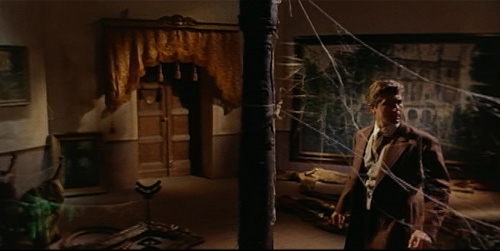

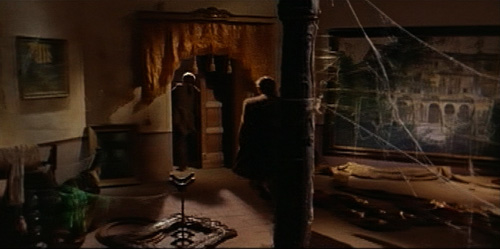
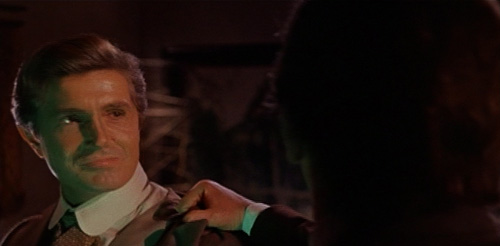
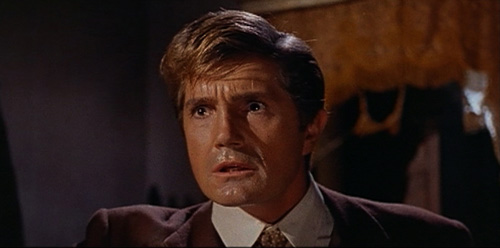
Moebius Chase Scene
Also a dream sequence made of distorted shots that works really well.
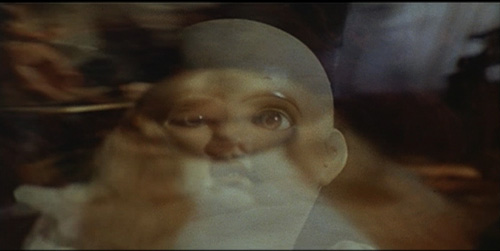

In Dreams
After this Bava was picked by Dino DeLaurentis to direct Diabolik. Dino wanted to give him a large budget but Bava refused. He knew if he accepted a lot of money he’d have to accept the control that went with it and that was not for him. He enjoyed making films his way, he evolved a technique of special effects so he could create anything his imagination came up with and for very little money. Lamberto Bava, Mario’s son said all the Italian intellectuals and big time filmmakers would go to see Bava’s films. Luchino Viscounti gave Operatzione Paura a standing ovation when he saw it.

Have a Ball, Baby
And Federico Fellini lifted the figure of the little girl and her ball symbolizing evil and dropped it into his film Toby Dammit a year later. Bava a super talented creator worked in genres looked down upon by the critics of his day, he worked with miniscule budgets and a lot of unknown actors, that’s why he was able to accomplish so much. Like another of my favorite artists, Chester Himes, who wrote genre detective stories brought out in cheap paperback editions but enabling him to give free reign to his creative spirit. If you like horror, if you’re interested in seeing pure creativity splashed across the silver screen, if you love film, see Kill, Baby… Kill!


